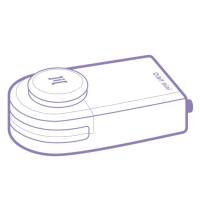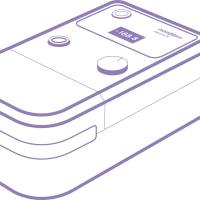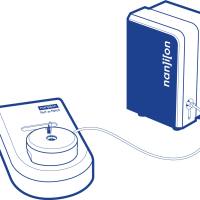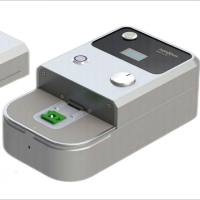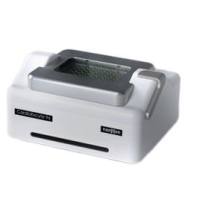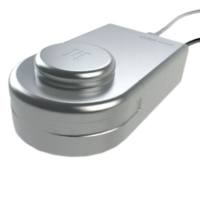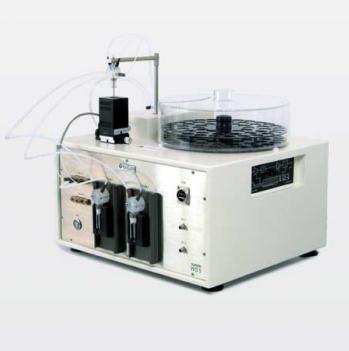
产品详情
文献和实验
相关推荐
库存 :大量
供应商 :德国nanion
现货状态 :有货
保修期 :一年
规格 :SURFE2R
SURFE²R N1 - 转运体工作站
与传统膜片钳设备相比,SURFE²R (表面电荷事件读取器,surface electrogenic event reader)是专用于测量带电转运体 (同向转运体、交换体与单向转运体)与离子泵的技术。 通常这些蛋白相对与离子通道的转运率较低。 SURFE²R技术通过更大的芯片面积从而同时记录最多达109 个转运体从而获取最佳的信噪比。SURFE²R N1是适用于基础研究与大学教学的设备。如果需要高通量, SURFE²R 96SE 可提供最多平行96芯片的转运体记录。
SURFE²R N1的特点
• 支持最多52种不同溶液的自动记录
• 每天可记录150数据点
• 移液设备、电生理设备与电脑整合的一体化设备
• 易学易用,适用于教学与科研
基于SSM的电生理技术特点
• 已在超过100 目标上通过验证,发表了超过 100篇同行评审过的文献
• 可测量转运体、离子泵与配体门控通道
• 也可测量电中性交换体、糖结合蛋白
• 可使用从细胞提纯的生物膜与囊泡或蛋白脂质体
• 非标记电学测量手段
• 每孔仅需要0.1 – 1 µg蛋白样品,并足够进行最多100次实验
• 实时数据与5 ms的高时间分辨率,非单点读取
• 相对膜片钳更高信号放大率
• 可完成快速绑定动力学测量
• 可完成EC50、 IC50、转运速度常数、转运体亚型比较...
基于固体支撑膜技术(solid-supported membrane,SSM) 的电生理技术建立于90年代末,关于SSM电生理技术的详细资料请参考 技术细节。 可重复使用的芯片包含一个镀金电极,在上面可以通过一次快速移液形成SSM,然后将包含转运体的样品加到SSM表面上。任何包含目标蛋白的膜制成品都可以用来测量,包括细胞破坏后形成的膜囊泡或重建提纯的蛋白形成的蛋白脂质体。这些样品可以冷冻保存数月甚至数年,因此不需要细胞培养室。
基于SSM的电生理技术的关键是通过溶液交换来施加底物或者配体来激活转运体,然后电荷的迁移可以被检测出来并被分析以得出需要的数据。 由于SSM的高稳定性,同一个样品可以进行上百个实验,所以可以测定诸如EC50 或IC50等参数 。拥有目前溶液交换的高时间分辨率,SURFE²R N1不但可以测量慢的转运过程,也可以分析快速的结合反应以及确定其反应速度常数。
SURFE²R N1易学易用,可以在一天时间内学会并掌握。该设备通过机械臂自动进行实验,极大的减少了操作人员的工作量。SURFE²R N1在一个设备里包含了实验所需的所有设备,包括溶液处理元件、电生理硬件和电脑主机。
The SURFE2R N1 设备:固体支撑膜(SSM):测量转运体电流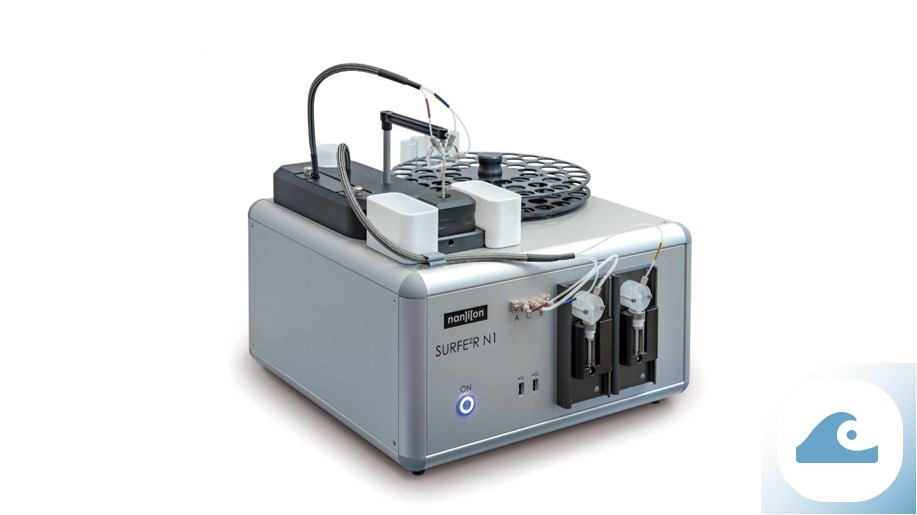

基于固体支撑膜(SSM)的电生理技术不同于传统的电生理技术,例如膜片钳,因为不需要活细胞,而是多种天然或人工膜囊泡。使用的样品范围从蛋白脂质体中的重构蛋白到来自细胞器或质膜的膜碎片。对于样品制备,可以使用细菌细胞,真核细胞培养物或天然组织。在实验之前将膜样品添加到SSM中。这导致膜稳定地吸附到SSM并形成电容耦合的复合膜。 SSM本身由硫醇化金涂层传感器芯片顶部的脂质单层组成。与膜片钳相比,一个重要的优点是传感器尺寸最大可达3 mm。这允许同时测量大约10^9个转运体并且产生信噪比的显着改善。因此,可以研究低转运率的目标电生理学表征。
与传统电生理学的差异
基于SSM的电生理技术与传统电生理技术之间的重要区别在于测量原理。在膜片钳电生理学中,由于在测量期间电压(驱动力)钳制,可以获得静止电流。在基于SSM的电生理学中,通过快速溶液交换建立的底物梯度是主要驱动力。带电底物或离子向脂质体或囊泡的转运产生膜电位。可以通过膜和传感器金层上的SSM之间的电容耦合来检测该电位。简而言之:测量由于电生质传递引起的膜电位的变化。在某些时候,膜电位等于化学驱动力,运输过程停止。这就是为什么用基于SSM的电生理学测量的任何电流都是瞬态的。峰值电流幅度反映了稳态条件下的转运蛋白活性。
由于电流衰减很快,因此一次测量仅需一秒钟。 由于SSM的高稳定性,可以使用相同的传感器和不同的缓冲条件进行多次测量,以确定动力学参数,例如EC 50 ,IC 50 或甚至速率常量。
SURFE2R N1 控制软件与自动化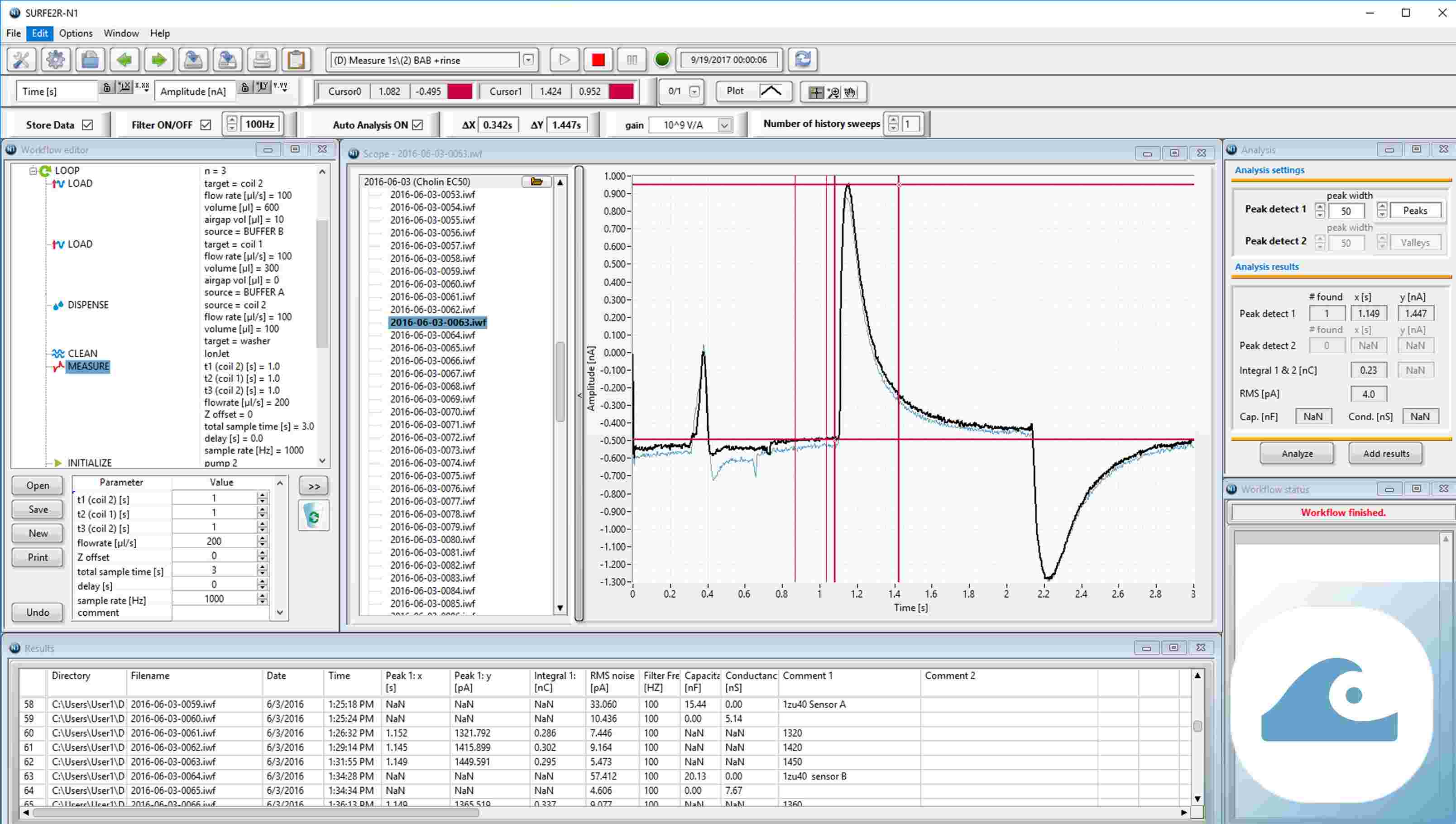
该设备内置了预先安装在内部计算机上的SURFE2R N1控制软件。这就形成了记录和分析软件。SurfControl的功能包括管理和编码表示SURFE2R检测协议的工作流程。工作流程可以包含多种测量,例如使用不同的底物浓度或抑制前后运输的比较。该工作流程包括实验过程中溶液流动的持续时间、速度和体积,不同缓冲液的数量和顺序,每次测量的重复次数,实验之间的培养时间和实验后用于冲洗传感器的体积等参数。在一个工作流程的运行过程中,不需要研究人员的干涉。除了实验本身的设计,SurfControl还能让研究人员查看和比较记录下来的痕迹。图形窗口允许峰值检测和峰值积分的计算,包括基线减法。附加的结果窗口用于自动记录轨迹,包括文件名、峰值和积分值以及测量时间。为了进一步分析,例如拟合动力学参数或减去负控制电流,该软件能够将数据导出为标准文件格式ASCII。
SURFE²R N1单通道记录芯片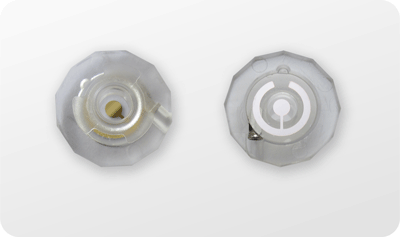
SURFE²R N1传感器芯片是Nanion Technologies为SURFE²R N1开发的专有创新产品。SURFE²R N1传感器芯片的核心结构是一个直径为3mm的镀金传感器。该结构与螺帽结合,便于操作。SURFE²R N1单传感器芯片可在适当的清洁协议后重新使用。
可用的型号
- "SURFE²R N1 Single Sensor Chip" (Order # 161001)
数据与应用
Adenine Nucleotide Translocator (ANT) - Recorded on the Surfer
![]()
 SURFE2R N1 data and applications:
SURFE2R N1 data and applications:
The Adenine Nucleotide Translocator (ANT) is located in the inner membrane of mitochondria and transports, as the name suggests, either ADP or ATP alone or against each other. Recordings were done on mitochondria inner membrane preparations from pigs heart. Example traces display the action of ANT either in the presence of ATP, in an other experiment in the presence of ADP.
![]() SURFE2R N1 data and applications:
SURFE2R N1 data and applications:
Purified AmtB from E.Coli was incorporated into liposomes and used on the SURFE2R N1. Shown are transient currents measured after a 100 mM ammonium jump in empty liposomes (green) or proteoliposomes containing AmtB at a lipid protein ratio (LPR) of 50 (black), 10 (red) or 5 (blue). Insert: Normalized current measured in proteoliposomes containing AmtB at an LPR of 50 (black), 10 (red) or 5 (blue).
Data from Mirandela et al, 2018
![]() SURFE2R N1 data and applications:
SURFE2R N1 data and applications:
Purified AmtB from E.Coli was incorporated into liposomes and used on the SURFE2R N1. AmtB substrate specificity. (A) Transient current measured after a 100 mM substrate jump. Ammonium (red), methylammonium (black), potassium (green) or sodium (purple). Potassium and sodium do not act as substrates for AmtB and methylammonium translocates but at a much reduced rate compared with ammonium. Insert: Normalised current after a 100 mM substrate jump. Ammonium (red), methylammonium (black).
Data from Mirandela et al, 2018
ChR2 - Cell-based assay optimization

![]() SURFE2R N1 data and applications:
SURFE2R N1 data and applications:
For assay optimization we checked the influence on cell suspension volume we have attached to one single sensor on the signal-to-noise ratio during the SURFE2R experiment.
ChR2 - Exposure time and frequency of light

![]() SURFE2R N1 data and applications:
SURFE2R N1 data and applications:
We investigated the influence of the duration and frequency of the light pulses for ChR2 activation on the stability of the ChR2 signals over time.
ChR2 - Membrane potential as driving force

![]() SURFE2R N1 data and applications:
SURFE2R N1 data and applications:
We investigated the effect of a membrane potential - generated by Na+/Ca2+ exchange activity of NCX1 - on the signal amplitude of light induced Na+ flux by ChR2.
ChR2 - Stability of Retinal binding

![]() SURFE2R N1 data and applications:
SURFE2R N1 data and applications:
We investigated the effects of retinal addition and removal on light-induced ChR2 activity using a prototypical SURFE2R N1 add-on for activation by light.
ChR2 - Variation of light intensity

![]() SURFE2R N1 data and applications:
SURFE2R N1 data and applications:
We observed saturation kinetics for the light-induced ChR2 activity with increasing LED intensities using a prototypical SURFE2R N1 add-on for activation by light.
ClC - EC50 for inward and outward directed chloride flux

![]() SURFE2R N1 data and applications:
SURFE2R N1 data and applications:
We determined EC50 and relative Vmax for Cl- in an Cl-/H+ exchange assay for both transport directions and found a slight asymmetry in transporter kinetics.

![]() SURFE2R N1 data and applications:
SURFE2R N1 data and applications:
We investigated the effect of the specific ClC inhibitor OADS on the transport activity of ClC and its reversibility.
ClC - Inward and outward directed chloride flux

![]() SURFE2R N1 data and applications:
SURFE2R N1 data and applications:
According to the transport direction of 2Cl-/1H+ exchange, we observed positive (Cl- efflux) or negative (Cl- influx) transient currents.
ClC - Proteoliposomes with different lipid-to-protein ratios

![]() SURFE2R N1 data and applications:
SURFE2R N1 data and applications:
We tested proteoliposomes with different densities of reconstituted ClC protein for their signal-to-noise ratios and compared the obtained signal amplitudes with a negative control: liposomes without reconstituted protein.
EAAT3 - Current Traces at different Sodium Chloride Concentrations
![]() SURFE2R N1 data and applications:
SURFE2R N1 data and applications:
EAAT3 current traces were recorded after application of different Sodium Chloride concentrations. The EC50 of the peak current was determined as 42.2 mM.
NCX_Mj - EC50 for Calcium and Magnesium

![]() SURFE2R N1 data and applications:
SURFE2R N1 data and applications:
Measurement of the transport activity of NCX_Mj. The first solution exchange provides a Na+-free solution to establish an outward directed Na+ gradient; the second solution exchange provides the divalent cation to activate the ion exchanger. By applying different concentrations of one divalent cation on the same sensor, we determined EC50 for Ca2+, Mg2+ and Sr2+.
![]() SURFE2R N1 data and applications:
SURFE2R N1 data and applications:
Cardiac NCX1 expressed in iCell® Cardiomyocytes2, Cor.4U® Cardiomyocytes or HEK cells was blocked by increasing concentrations of KB-R7943.
![]() SURFE2R N1 data and applications:
SURFE2R N1 data and applications:
Cardiac NCX1 expressed in iCell® Cardiomyocytes2 or HEK cells was blocked by increasing concentrations of SEA0400, a specific blocker of NCX.
NCX1 - Current traces recorded from Cor.4U Cardiomyocytes, iCell Cardiomyocytes and HEK cells
![]() SURFE2R N1 data and applications:
SURFE2R N1 data and applications:
Cardiac NCX1 was activated using 30 μM Ca2+ on the SURFE2R N1. NCX1 was recorded from Cor.4U® Cardiomyocytes, iCell® Cardiomyocytes2 or overexpressed in HEK cells. The calcium affinity was determined for NCX1 recorded from iCell® Cardiomyocytes2 and HEK cells, shown on the right.
Organic Cation Transporter 2 (OCT2) - Pharmacology
![]() SURFE2R N1 data and applications:
SURFE2R N1 data and applications:
EC50 values and relative Vmax for three different substrates are shown.
The IC50 value for Choline was determined as 4.6 mM, for TEA as 0.33 mM and for Metformin as 8.6 mM
PepT1 - Pharmacology of Lys[Z(NO2)]-Val

![]() SURFE2R N1 data and applications:
SURFE2R N1 data and applications:
Representive traces of PepT1 overexpressed in CHO cells. PepT1 (SLC15A1) is expressed mainly in intestine and kidney, it enables uptake of oligopeptides. The PepT1 signal is evoked by glycylglycin. The transport of oligopeptides can be inhibited by addition of Lys[Z(NO2)]-Val. The IC50 of Lys[Z(NO2)]-Val was 380µM.
Respiratory Chain Complex I and III - Current Over Mitochondrial Membrane

![]() SURFE2R N1 data and applications:
SURFE2R N1 data and applications:
In the respiratory chain Complex I and III, oxidation of NADH leads to transport of 4 protons across the membrane. The electrons are transferred to cytochrome c. Because of the electron leakage to oxygen, both complex are the main sites of production of harmful superoxide. In these experiments using the SURFE2R N1, application of 100µM NADH results in a current over the mitochondrial membrane, where Complex I and III are expressed.
Respiratory Chain Complex II and III - Current Traces

![]() SURFE2R N1 data and applications:
SURFE2R N1 data and applications:
Respiratory Chain Complex II is a succinate dehydrogenase. In this complex, succinate is oxidated to fumarate. The electrons are transfered to the quinone pool, the Complex III (cytochrome bc1 complex) and cytochrome c, while four protons are transported to the intermembrane space.
Respiratory Chain Complex IV - Current Traces

![]() SURFE2R N1 data and applications:
SURFE2R N1 data and applications:
The Respiratory Chain Complex IV, known as Cytochrom c oxidase, reduces oxygen by cunsumption of electrons from cytocrome c and transport of two protons to the intermembrans space. Here the reaction runs backwards.
Respiratory Chain Complex V - Action of the ATP Synthase after Application of ATP

![]() SURFE2R N1 data and applications:
SURFE2R N1 data and applications:
The Respiratory Chain Complex V uses the transmembrane proton gradient (produced by Complex I, III and IV) to generates ATP from ADP plus phosphate. One component of ATP synthase acts as an ion channel that provides for a proton flux back into the mitochondrial matrix. This reflux releases free energy, which is used to drive ATP synthesis, catalyzed by the other component of the complex. Experiments on the SURFE2R N1 show the action of the ATPase after application of ATP.

![]() SURFE2R N1 data and applications:
SURFE2R N1 data and applications:
Ca2+-transport in SERCA is triggered by ATP hydrolysis. Using ATP concentration jumps, the authors determined the IC50 of SERCA inhibition by cisplatin
SGLT1 - Current Traces after Application of alpha-MDG
![]() SURFE2R N1 data and applications:
SURFE2R N1 data and applications:
Current traces after application of 10 mM and 50 mM alpha-MDG.
Sodium-Potassium ATPase - Analysis

![]() SURFE2R N1 data and applications:
SURFE2R N1 data and applications:
The Sodium-Potassium ATPase, also known as Na+/K+ pump is responsible for the active transport of Na+ and K+ in the cells containing relatively high concentrations of K+ ions but low concentrations of Na+ ions. The Na+/K+-ATPase helps maintain resting potential, avail transport, and regulate cellular volume. Here, we demonstrate the conductance of the pump, in the presence of ATP, Na+ and K+, or in the presence of ATP and Na+
发表文献:
2021 - Structure and lipid-mediated remodelling mechanism of the Na+/H+ exchanger NHA2
2021 - Structure and dynamics of the drug-bound bacterial transporter EmrE in lipid bilayers
2021 - Structural basis for Potassium transport by KdpFABC
2021 - Functional Characterization of SLC Transporters Using Solid Supported Membranes
2021 - Engineering and functional characterization of a proton-driven β-lactam antibiotic translocation module for bionanotechnological applications
2021 - Cryo-EM structures of excitatory amino acid transporter 3 visualize coupled substrate, sodium, and proton binding and transport
2021 - A Solid Supported Membrane-Based Technology for Electrophysical Screening of B0AT1-Modulating Compounds
海报块讯:

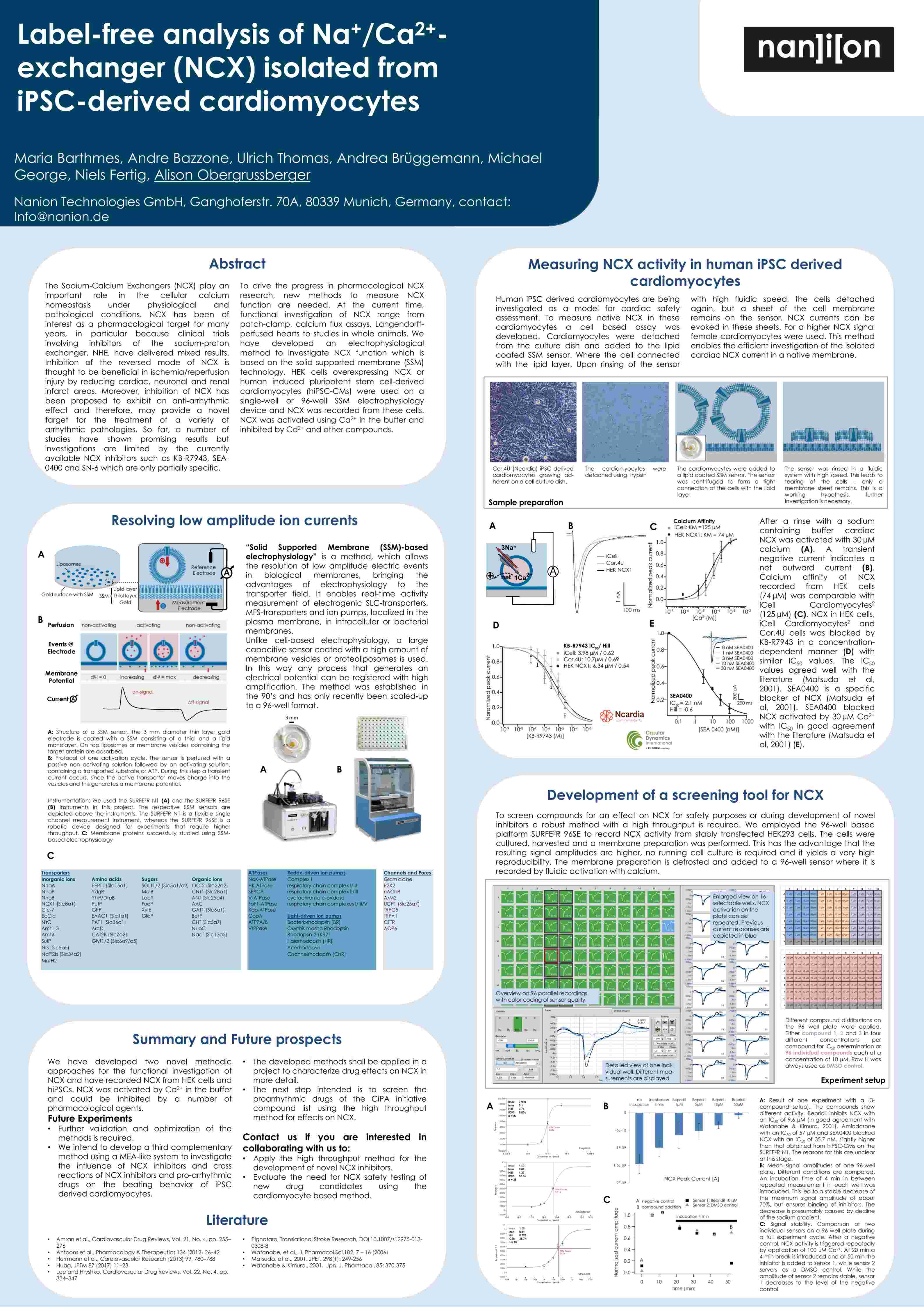

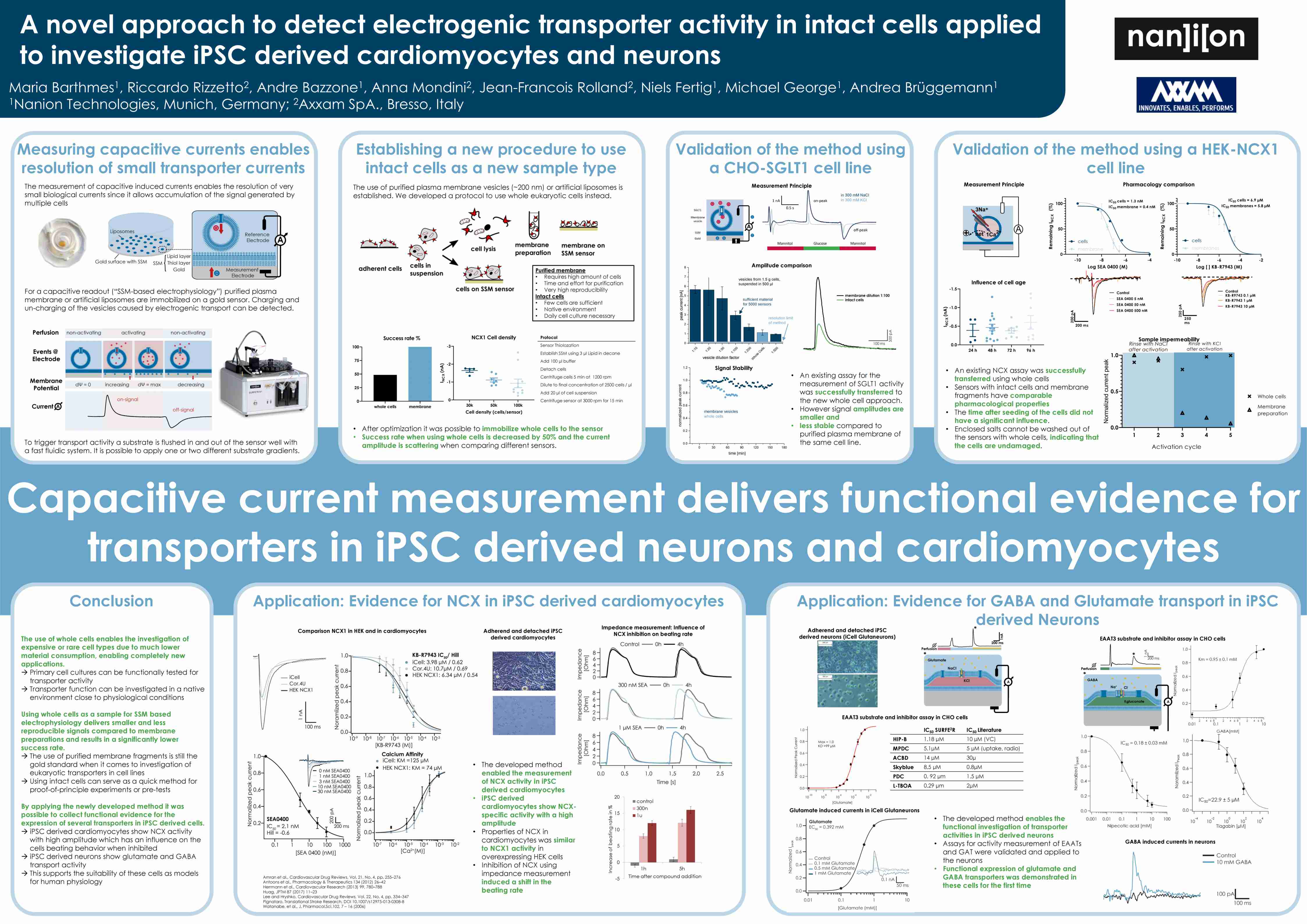


耐尼恩技术(北京)有限公司
实名认证
金牌会员
入驻年限:4年









